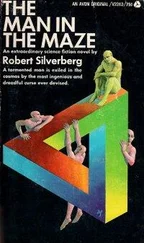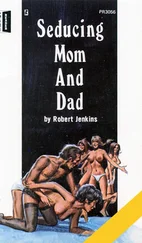Robert Leckie - Strong Men Armed
Здесь есть возможность читать онлайн «Robert Leckie - Strong Men Armed» весь текст электронной книги совершенно бесплатно (целиком полную версию без сокращений). В некоторых случаях можно слушать аудио, скачать через торрент в формате fb2 и присутствует краткое содержание. Город: Cambridge, Год выпуска: 2010, ISBN: 2010, Издательство: Da Capo Press, Жанр: nonf_military, на английском языке. Описание произведения, (предисловие) а так же отзывы посетителей доступны на портале библиотеки ЛибКат.
- Название:Strong Men Armed
- Автор:
- Издательство:Da Capo Press
- Жанр:
- Год:2010
- Город:Cambridge
- ISBN:978-0-786-74832-7
- Рейтинг книги:3 / 5. Голосов: 1
-
Избранное:Добавить в избранное
- Отзывы:
-
Ваша оценка:
- 60
- 1
- 2
- 3
- 4
- 5
Strong Men Armed: краткое содержание, описание и аннотация
Предлагаем к чтению аннотацию, описание, краткое содержание или предисловие (зависит от того, что написал сам автор книги «Strong Men Armed»). Если вы не нашли необходимую информацию о книге — напишите в комментариях, мы постараемся отыскать её.
Strong Men Armed — читать онлайн бесплатно полную книгу (весь текст) целиком
Ниже представлен текст книги, разбитый по страницам. Система сохранения места последней прочитанной страницы, позволяет с удобством читать онлайн бесплатно книгу «Strong Men Armed», без необходимости каждый раз заново искать на чём Вы остановились. Поставьте закладку, и сможете в любой момент перейти на страницу, на которой закончили чтение.
Интервал:
Закладка:
While being wary of exaggeration, I have also suspected almost all that is fanciful or gives off the aroma peculiar to the post-battle campfire. One of my buddies (not a source for this book) used to say of such tales: “Certainly, I believe this story. I made it up myself!” These are what Marines call “sea stories.” They are popular, though seldom believed, and they are unmistakable. One of these, I am sure, is the widely accepted story of the Battle of Coffin Corner on New Britain, where Sergeant Joe Guiliano counterattacked the enemy with a cradled machine gun. The story goes that Guiliano’s men kept calling for him by name and that the Japanese, mistaking the name for an American battle cry, began shouting it themselves—thus bringing the formidable Guiliano into their midst. Unfortunately for the story’s reputation, the name Guiliano has one of those L’s which the Japanese pronounce as R, and there is no version speaking of the enemy calling for “Guiriano.” Even if this difficulty did not exist, the story seems a bit too salty.
Official accounts of Marine operations have also been received with a cocked eyebrow, and such Marine errors as the first Matanikau operation, the useless Talasea landings or General Rupertus’ reluctance to use Army troops at Peleliu have been described for what they were. However, I have also avoided taking sides in any controversy, and have presented the famous quarrel over Marine General Howlin’ Mad Smith’s dismissal of Army General Ralph Smith on Saipan only as an actual event. If even so little seems prejudicial to Ralph Smith’s case, then I refer the reader to The Campaign in the Marianas, written by Philip A. Crowl, a former Navy officer, for the Army’s Office of Military History. Chapter X, pages 191-201, gives, in my opinion, the fairest presentation of what happened and makes the calmest judgment.
Army operations, incidentally, are not described in detail, even when they are conjoined to those of the Marines—as at Okinawa, the Marianas, or the Solomons—because this is the story of the Marines’ war. This book’s account of Guadalcanal, for instance, is ended on December 9, 1942, the day command passed from the Marines to the Army. What happened between then and February 9, when the island was secured, can be found in Guadalcanal: The First Offensive, by John Miller, Jr., a Marine who fought at Bougainville and who is now the Deputy Chief Historian, Office of the Chief of Military History.
Most of the human touches in this book come from division histories, memoirs, biographies and anthologies, and the stories of Marine combat correspondents. There might have been more of them, except that my attempt to go through nearly a hundred cartons of combat correspondents’ material at Marine Headquarters was defeated by the discovery that the stories were on file by correspondents’ names. Since all were undated and rarely identified the battlefield—as censorship required—the only person who could have made use of them was he who knew the battles through which every combat correspondent had passed as well as which one was being described then. This, like the name of the Unknown Soldier, is known but to God.
A few small alterations or deliberate maintenance of misconceptions need explanation. I have spelled the Japanese word for wine as saki rather than sake, realizing that the general reader would probably pronounce the latter to rhyme with cake, rather than with rocky, as it should. I am aware, of course, that saki is the Japanese word for a point of land, just as I know that take means mount and that in speaking of Mount Yaetake on Okinawa I am committing a redundancy. But the Marines always called it Mount Yaetake, just as they still talk of the Battle of the Tenaru on Guadalcanal even though Army maps have proved that the fight was fought on the Ilu. In this book it remains Tenaru, and if there is criticism from historians, I prefer this to having a Marine friend write: “Can’t you even remember the names of the battles we were in?” For similar reasons the body of water separating Guadalcanal from Florida and other islands is called Iron Bottom Bay, rather than Iron Bottom Sound as historians now call it. No one in my memory ever called it anything but “the bay,” although it is actually neither bay nor sound but a channel and was known as Sealark Channel before the war. Also, jaw-breaking Navy Medical Corps ratings such as Pharmacist’s Mate Second Class and, worse, the mystifying abbeviation PHM 2/C, have been avoided simply by using the title “Corpsman” for all these men who served with the Marines.
It is hoped that readers will grant that numerous dramatizations such as the last few minutes aboard the sinking battleship Yamato or the suicidal end of Generals Ushijima and Cho on Okinawa or the words which Colonel Hiromichi Yahara spoke beneath Shuri Castle have their basis in historical fact. The first comes from Morison’s Victory in the Pacific, Volume XIV of his series, which quotes a surviving ensign named Mitsuru Yoshida; the second from Japanese prisoners of war quoted in Okinawa: The Last Battle, by Roy E. Appleman, et al; the third from Okinawa Operations Record and the Yahara Interrogation quoted in Okinawa: Victory in the Pacific, by Major Charles S. Nichols, U.S.M.C., and Henry I. Shaw, Jr.
Mr. Shaw, incidentally, kindly consented to check my manuscript for accuracy. He has spent the last decade researching and writing histories of the Marines in World War Two, and there are few people so well qualified to hunt for error or to detect the apocryphal. I am most grateful to him, both for helpful suggestions and corrections. Those mistakes that remain here are, of course, mine.
Before I conclude, let me acknowledge my debt to the Marine Corps and to its commandant, General David M. Shoup, as well as to Colonel James E. Mills, head of the Division of Information, and to Lieutenant Colonel Philip N. Pierce of that division’s media section. The staff of the Marine Historical Branch commanded by Colonel Thomas G. Roe has been of invaluable assistance with its customary grace and generosity, especially Mr. D. Michael O’Quinlivan, head of research and records. Although Mr. Robert D. Loomis, my editor at Random House, is already aware of my gratitude, the reader should know that if this book is consistently clear and all signposts are plainly marked, this is chiefly to the credit of his advice and criticism.
Finally, all that is subjective or impressionistic here—and I admit there is much of it—comes from my own experience in the war. This I regard as my warrant for having written this story in this way.
ROBERT LECKIE
Mountain Lakes, New Jersey
September 4, 1961
SELECTED BIBLIOGRAPHY
APPLEMAN, ROY E., et al. Okinawa: The Last Battle. (“U.S. Army in World War II.”) Washington: Government Printing Office, 1948.
ARNOLD, ARMY GEN. H. H. Global Mission. New York: Harper & Bros., 1949.
AURTHUR, 1ST LT. ROBERT A., et al. The Third Marine Division. Washington : Infantry Journal Press, 1948.
BARTLEY, LT. COL. WHITMAN S. Iwo Jima: Amphibious Epic. (Marine Corps Historical Monograph.) Washington: Government Printing Office, 1954.
BLAKENEY, JANE. Heroes: U.S.M.C. Published by author, 1957.
BLANKFORT, MICHAEL. The Big Yankee: A Biography of Evans Carlson. Boston: Little, Brown and Co., 1947.
BOGGS, MAJOR CHARLES W., JR. Marine Aviation in the Philippines. (Marine Corps Historical Monograph.) Washington: Government Printing Office, 1951.
BOYINGTON, COL. GREGORY. Baa Baa Black Sheep: An Autobiography. New York: G. P. Putnam’s Sons, 1958.
Читать дальшеИнтервал:
Закладка:
Похожие книги на «Strong Men Armed»
Представляем Вашему вниманию похожие книги на «Strong Men Armed» списком для выбора. Мы отобрали схожую по названию и смыслу литературу в надежде предоставить читателям больше вариантов отыскать новые, интересные, ещё непрочитанные произведения.
Обсуждение, отзывы о книге «Strong Men Armed» и просто собственные мнения читателей. Оставьте ваши комментарии, напишите, что Вы думаете о произведении, его смысле или главных героях. Укажите что конкретно понравилось, а что нет, и почему Вы так считаете.












